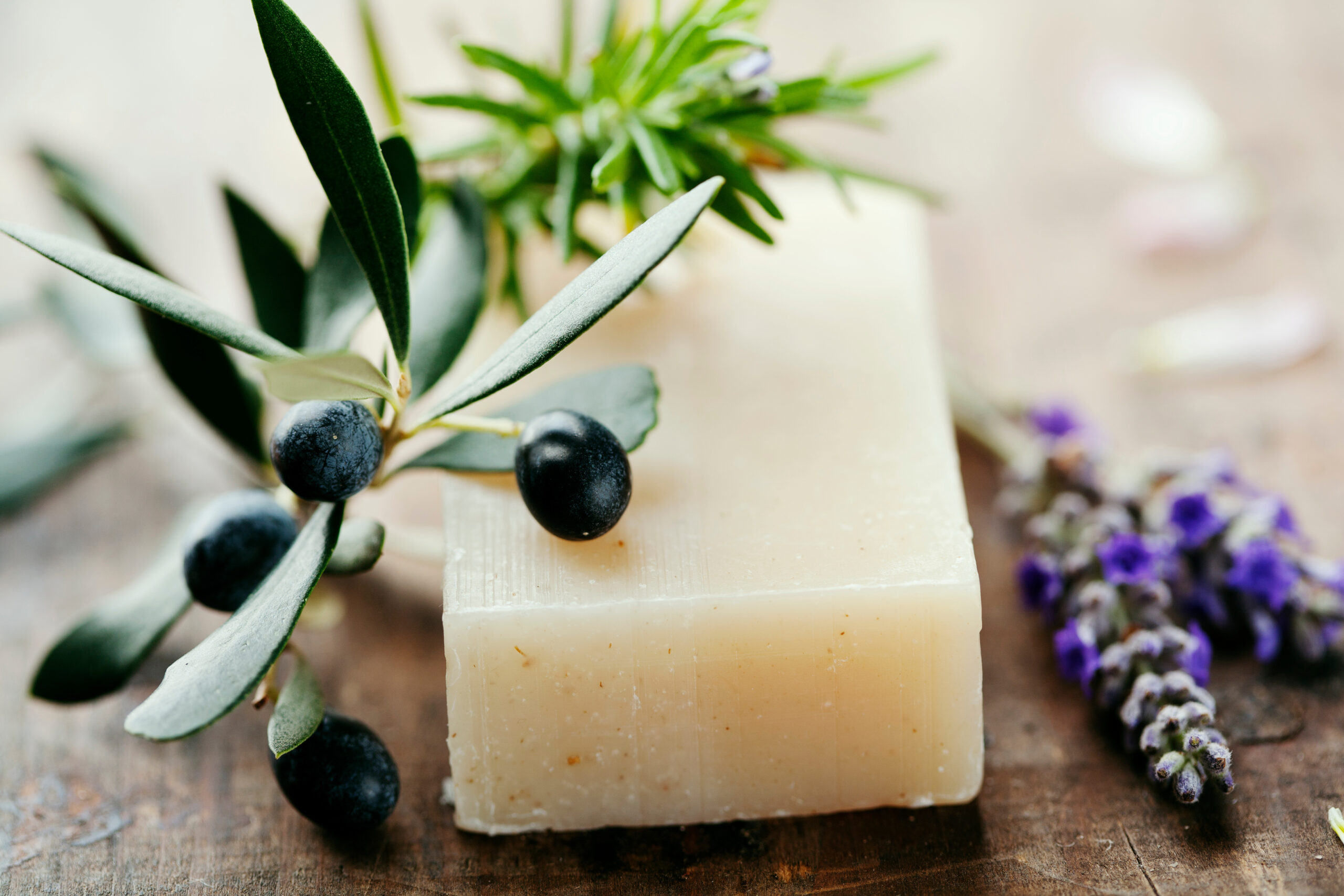
A confession: I’m astounded at how much I discovered I did not know about this topic before I started my research. After all, my family’s been making soap for five generations, and primarily Castile soap for three. I definitely approached this topic with pride that I’d be merely verifying a few aspects of the soap lore I grew up with. While the chemistry of soap was indeed familiar to me, the details around the history of Castile soap were novel.
I’m not going to disguise that this is indeed a deep dive into soap nerdery. I hope you’re with me on that. In the research for this, I had an excuse to spend my work hours reading some fantastic historical accounts. It was fascinating to discover there is an intersection of unlikely topics such as global superpowers, class warfare, religious tension, scientific discovery, and soap. And you thought soap was just keeping your hands clean.
I hope you enjoy reading about this second oldest of intentional chemical reactions (beer was first) that is still our best line of defense against illness today.
Origin of soap
The very first making of soap likely went unnoticed. It’s very difficult to pinpoint the moment of discovery for something that happened 5500 years ago—partially because recording events for posterity was difficult and partially because discovery takes someone able to recognize what they are witnessing. (Gravity was around for quite some time before Isaac Newton put a name to it in the 1660s.) However, we do have written record in the form of this stone tablet, dating from the 3rd century BC in Mesopotamia, which records a rudimentary recipe for soap, indicating a clear understanding of the reaction and intentionality in conducting it.

There are many logical guesses as to how soap first came about. Soap at its simplest is the chemical reaction between fats or oils and a strong alkali. With that in mind, perhaps fats from the cooking of food or from the burning of sacrifices mixed with the ashes (which are alkaline) of the fire beneath it, thus creating soap. I can easily envision this scenario, especially if any cooks back then were as messy as I am and let their pots sputter. But whether anyone noticed the creation of soap in such a situation is uncertain.
Another supposition behind the invention of soap was in the manufacturing of textiles. Ancient weavers found the dye used on wool fabric was absorbed more uniformly if the fabric was first washed, and that scrubbing the wool fabric with ash produced a better dyed result than scrubbing the fabric with water alone or another scouring substance like sand. Perhaps what made the ash better was that it reacted with the natural lanolin of the wool fabric to create a rudimentary soap. Perhaps.
Both scenarios are logical, and even possible, but whether they are historically accurate may be something we will never know.
Regardless of the moment of discovery, we have written references that soap was a cleaning medium by 2500 BC in southern Sumer (modern day Iraq). The Babylonians who controlled the region next are further credited with its use. Soap was used in the production of fabrics, for medicinal purposes, and for ceremonial washing, but there is less mention of its use for regular hygiene.
Soap for personal hygiene
While soap today is synonymous with personal hygiene, this has not been the case throughout history. The earliest soaps seemed to have found manufacturing, religious, and medicinal uses, but not as much for regular personal-care use.
While Roman baths are widely renown, bathing didn’t necessarily involve soap. Body cleansing in Roman times was done with oil, massaging oil into the skin and scraping it off with a tool called a strigil.
There is wisdom in this concept of cleansing with oil. In chemistry, like dissolves like, and as such, oil dissolves oil. Much of what is on our skin that we want to remove are various forms of oils. Even today oil is still an excellent way to remove stubborn makeup or sunscreen.
While they did not know the underlying microbiology as to why, both Hungarian doctor Ignaz Semmelweise and Red Cross founder Florence Nightengale knew in the 1840s and 50s that handwashing with soap saved lives in their respective medical environments. French chemist Louis Pasteur’s introduction and British surgeon Joseph Lister’s expansion of germ theory in the 1860s provided the scientific understanding that cross-contamination of microbes causes disease. Nonetheless, handwashing with soap as a regular practice for the public didn’t get an official recommendation until well over a century later when the CDC issued a statement in the 1980s.
Materials used to make early soaps
The first soaps were made with animal fats—tallow (cattle), lanolin (sheep), lard (pig), even goat milk mixed with poorly understood alkali. Unrefined animal fats did not make a pretty soap. They were dingy colored and soft and didn’t smell great. Rendered, or purified, animal fats make a much prettier soap, but the process requires hours of constant tending and releases noxious odors—especially so before the invention of modern soapmaking.
Soapmakers and candle makers were often one and the same because both used rendered fat, often tallow. My family’s first generation soapmaker Emanuel Heilbronner in Laupheim Germany in 1858 made both candles and soap.
History of vegetable oil-based soap
The earliest soap made with vegetable oil instead of animal fat came from Aleppo in modern day Syria starting in the 8th century AD. The soap was made with readily available oil from olives and laurel berries, abundant in the region. The process of combining the oils with the alkali was the same in principle as with animal fats, but it was an easier process and gentler on the skin.
Aleppo soap is initially green, derived from the bay laurel oil, but the bars form an ivory crust as they cure. When the soap is cut, you can see the iconically green interior, verifying the authenticity of the Aleppo soap.
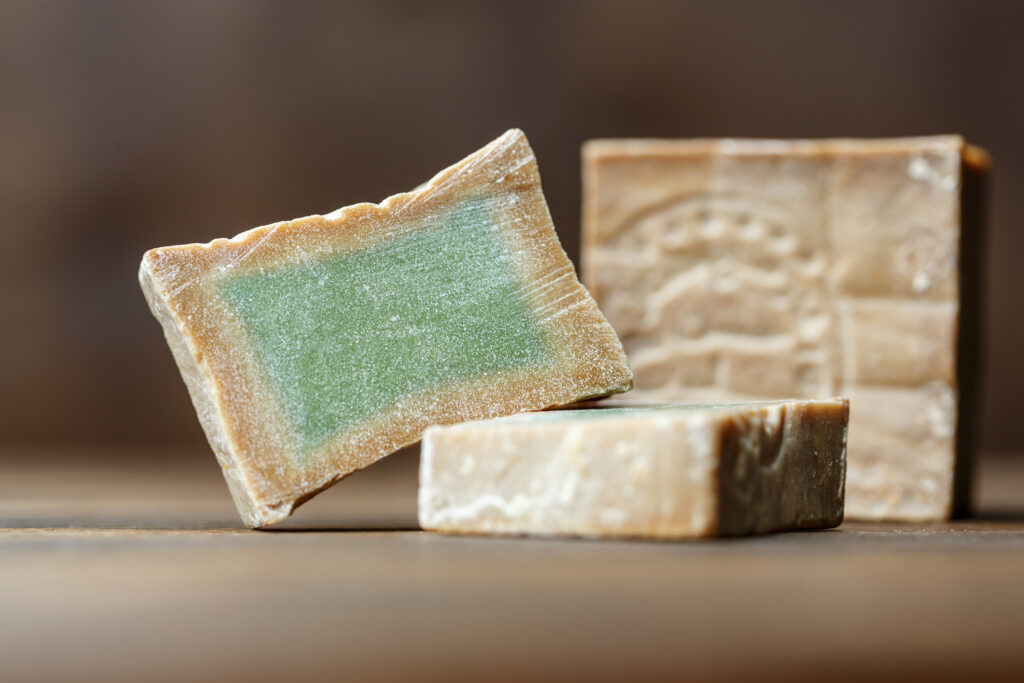
Aleppo soap was indeed an art form. Once the slurry of oil and alkali cooked for several days, reacting with each other in the process called saponification, it was poured into a frame cut into the floor of a room for cooling and initial hardening.
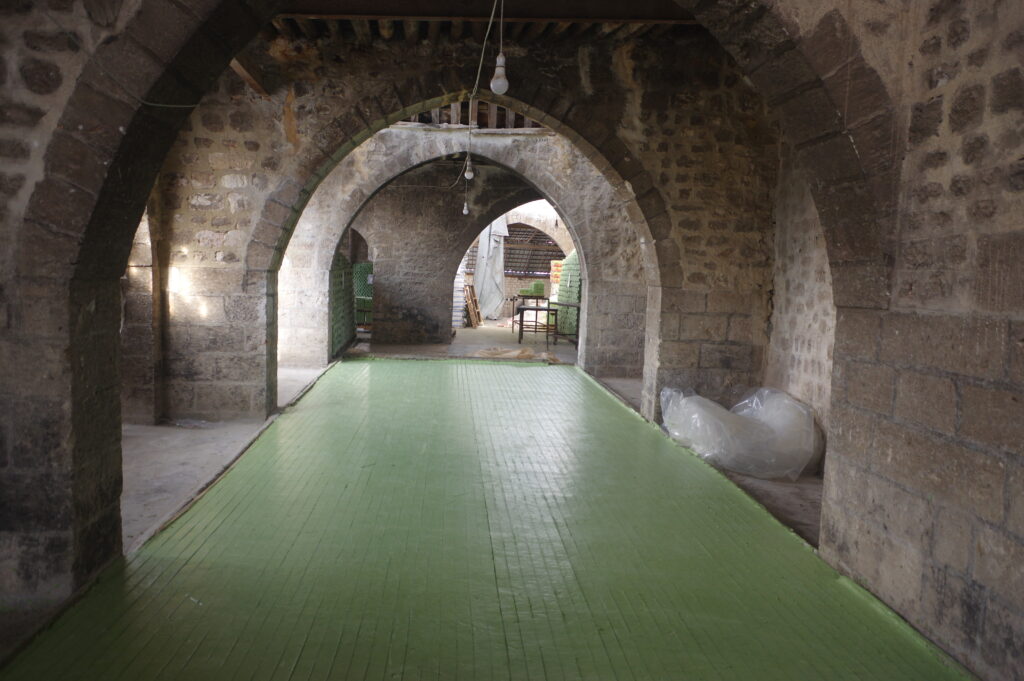
Then it was cut into bars and stacked into towers, and allowed to cure for 6 months. The towers allowed for abundant circulation. The curing made the bars hard, mild, and long-lasting.
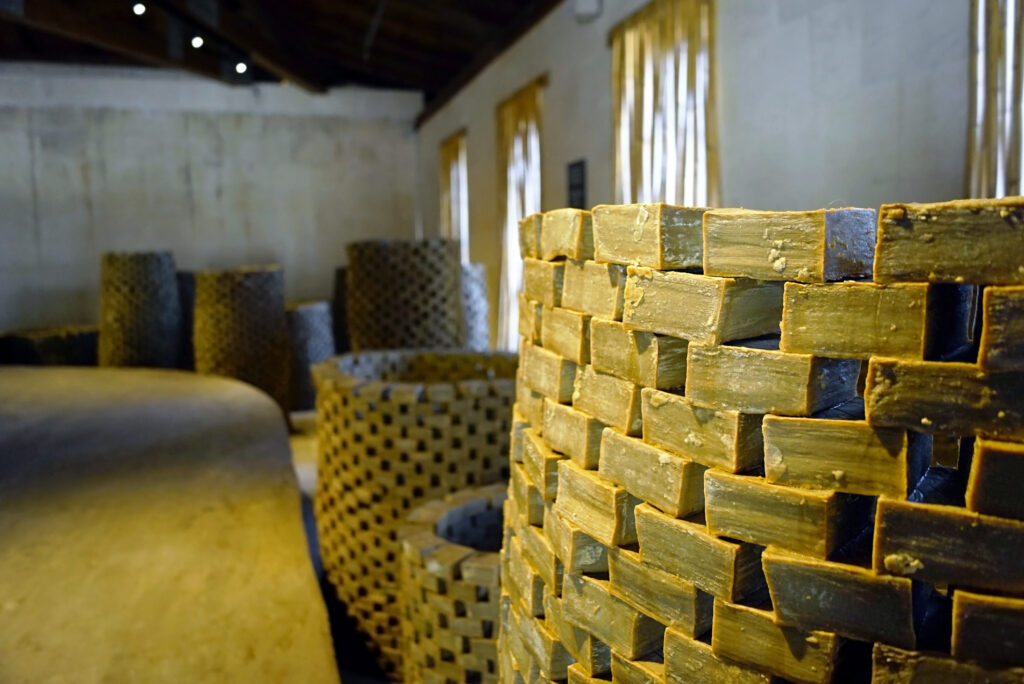
Not far away in Palestine began the production of Nablus soap, more simply made with only olive oil and lye. In both Syria and Palestine, there remain still a few soapmakers in operation today, making soap in the same manner as their ancestors.
The advent of Castile soap
Castile soap was named after the region it came from, the Crown of Castile, which at its largest extent encompassed most of modern-day Spain. However, it isn’t clear how soapmaking got to Spain. The lore I grew up with, which I’ve read a number of times in soap histories but without substantiation, was that Spanish Crusaders brought the technology back from Aleppo and Nablus after their campaigns. However, soapmaking was present in Europe prior to this.
It was known to the ancient Phoenicians, whose empire stretched from the Levant across all of northern Africa and who engaged in trade with the southern Iberian Peninsula, and also to the Romans who controlled the area for nearly 600 years from the 2nd century BC to the 4th century AD. Also, the Moors, who invaded Spain in the 8th century AD and dominated for 700 years were sticklers for cleanliness, especially when it came to their religious practices, and with their Arabic roots, would have known about soapmaking.
Traces of soapmaking’s Arabic origins are still woven through the Spanish language today, evidenced in part by the “al-” prefix. Almona is the Spanish word for a soapmaking factory, stemming from the Arabic almuna with the same meaning. The word álcali, a cognate of the English “alkali”, stems from the Arabic word meaning “to roast”, indicative that early alkalis used in soapmaking were derived from the burning of certain plants. The Spanish word for the native plants used to derive alkali is almarjo, which stems from the Arabic word almárg, referring to similar salt-loving plants.
Regardless of how the technology arrived, there were a few factors about the soap made in the Castile region that set it apart. While the ready and abundant olive oil which provided the foundation for the soap was not unique to Spain, the alkali produced in the region was. Until the late 18th century, the only way to produce the necessary alkali to make soap (and, incidentally, glass) was by drying and roasting certain plants to produce soda ash.
Several species of salt-tolerant Salsola plants, or saltwort, native to Spain produced the very best soda ash, called barrilla. The barrilla contained an excellent percentage of soluble alkali. The export of Spanish barrilla was a significant industry in itself, and was so protected, that selling the native Salsola seeds outside of Spain was punishable by death.
Furthermore, a technique arose in Spanish soapmaking to combine the reacted oil and alkali with salt water. This process, called “salting out” or “graining” would cause the soap to float to the water’s surface, thereby separating from any leftover lye or impurities. The soap resulting from this high-quality alkali and salting process was harder and therefore longer lasting, milder on the skin due to its lower pH, and beautifully white. It was considered a luxury soap, much sought-after across Europe and even into the Americas.
The decline of Castile soap
Castile soap did not sustain a dominant place in the global market for a variety of reasons. For one, in 1791 Frenchman Nicholas LeBlanc developed a process for producing the needed alkali from sodium chloride (aka, table salt), which brought to the market a purer alkali that could be made anywhere and at greater volume. The story of LeBlanc’s discovery is a drama in itself, wrapped up in the tumult of the French Revolution that saw his patron guillotined, his production confiscated, his payment denied, and eventually his life ended by suicide. However, his technique survived and was replicated and scaled to large production in England and other industrial centers. Once this easier alkali emerged, the demand for Spanish barrilla declined.
Furthermore, Castile soap did not have the protection of royal patronage that Marseilles soap did in neighboring France. King Louis XVI instituted regulations that outlived him dictating that Marseilles soap must be made in Marseille and contain at least 72% olive oil. Because of this lack of regulation over where or how Castile soap was made, the name was vulnerable to cheap, poor quality imitations flooding the market.
Another factor in the decline of Castile soap involves religious and geopolitical tensions. England had been a large market for Castile soap, but savvy marketers for English soapmaking brands began referring to the Castile soap as “Catholic soap” stemming from Catholic Spain. This was unpalatable to the Protestant English. The implication was that use of the soap implied religious allegiance. So even though English soap was of lesser quality than the Spanish, it was a point of national pride to use it. Spain’s decline as a global superpower in the 16th century combined with England’s ascension further doomed the status of Spanish goods. The decline was cemented in the early 17th century, when England’s King James sanctioned the formation of a soap monopoly allowing only domestically manufactured soap.
With less demand, many Castile almonas closed and others were casualties of upheavals in the country. I wasn’t able to find any historic sites still in operation, although there are operations that have opened more recently. I came across one centuries-old site that is still standing but not in operation, La Almona de Sanlúcar south of Seville, which seems to be slated for redevelopment. If any readers happen to know of extant historic Spanish soapmaking operations, please share them in the comments.
My family’s history making Castile soap
While Castile soap was around for centuries and was certainly imported into the United States as a luxury product, my grandfather Emanuel Bronner (aka the founder of Dr. Bronner’s) was the first in his family to make it in America beginning in the 1940s. He was the third generation of soapmaker in his family, but the previous two were both in Germany. His grandfather, based in Laupheim, made soap (and candles) likely out of tallow, and his father and uncles, with the Heilbronn based company Madaform, made a variety of soaps, including lanolin-based soaps—bars of which we still have today—and possibly some Castile soap, meaning olive oil based soap. My grandfather only ever made vegetable-based Castile soap once he came to America and regularly challenged reviewers to compare his soap to synthetic detergent bars on the market.
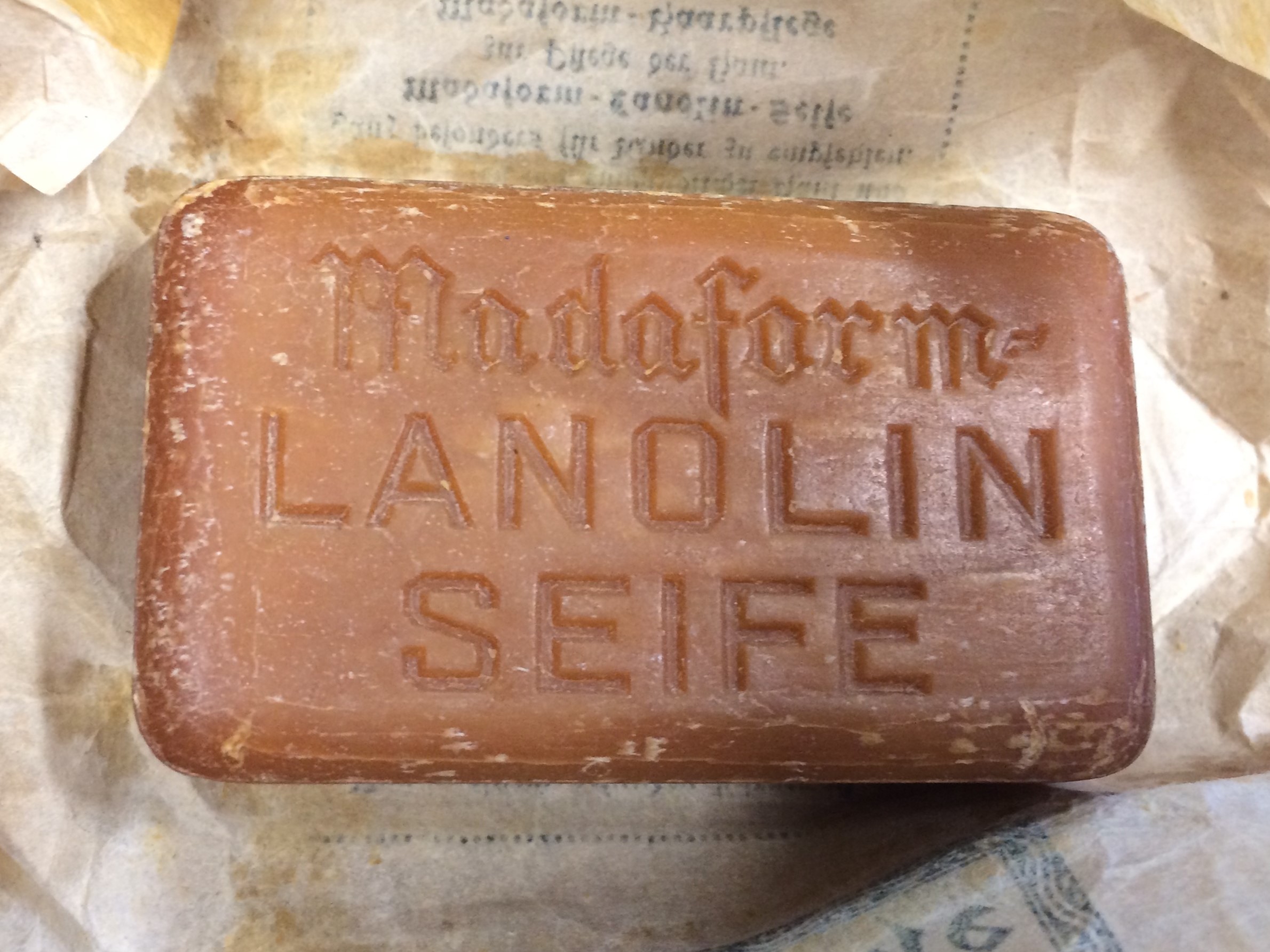
On his earliest labels, my grandfather emphasized the mildness and versatility of the Castile soap, always adding new uses to the label through the years and increasing the number of uses in the name–“9-in-1” became “13-in-1” which became the “18-in-1” listed today, though I can list even more uses than that.
With his concern for the environment, he likely also appreciated the lower footprint its production made, since vegetable oils are less impactful to produce than rendered animal fats or petroleum derivatives. He was drastically ahead of his time in his prioritization of staying close to nature when the popular trend was toward “Better living through chemistry,” a successful ad campaign from DuPont chemical touting the reliability of synthetic manufacturing and the unpredictability of nature. My grandfather touted the straight-from-the-plant oils and the biodegradability of his soaps.
Another novelty of my grandfather’s first marketed soap was that it was liquid. Liquid soap is achieved by using potassium hydroxide as the alkali instead of sodium hydroxide, with a few other adjustments in the ingredients. One of the many questions I wished I had thought to ask him was why he wanted to make a liquid soap instead of a bar. If you’ll pardon my presumption, my guesses as to his reasons are that the liquid was more novel than the bar, could hold a larger volume of essential oils (and the power-packed punch of peppermint was a key allure of his soap), and perhaps most importantly to him, it offered a larger label on which my grandfather could share his writings. If you haven’t ever heard the history of exactly how important the label was to my grandfather, you’ll want to read my article, How the Label was Born. Over two decades later, he did release bar soaps as well.
Castile soap today
Castile soap is trending today as people are learning of its special position as a true soap with mild cleansing properties, effective for all manner of cleaning, yet gentle enough for the most sensitive of skin. It can be made with sustainable and renewable ingredients and is the go-to for folks who are looking for a plant-based soap, with a rich lather, and is clean-rinsing. At least that’s what defines Dr. Bronner’s Pure-Castile Magic Soap.
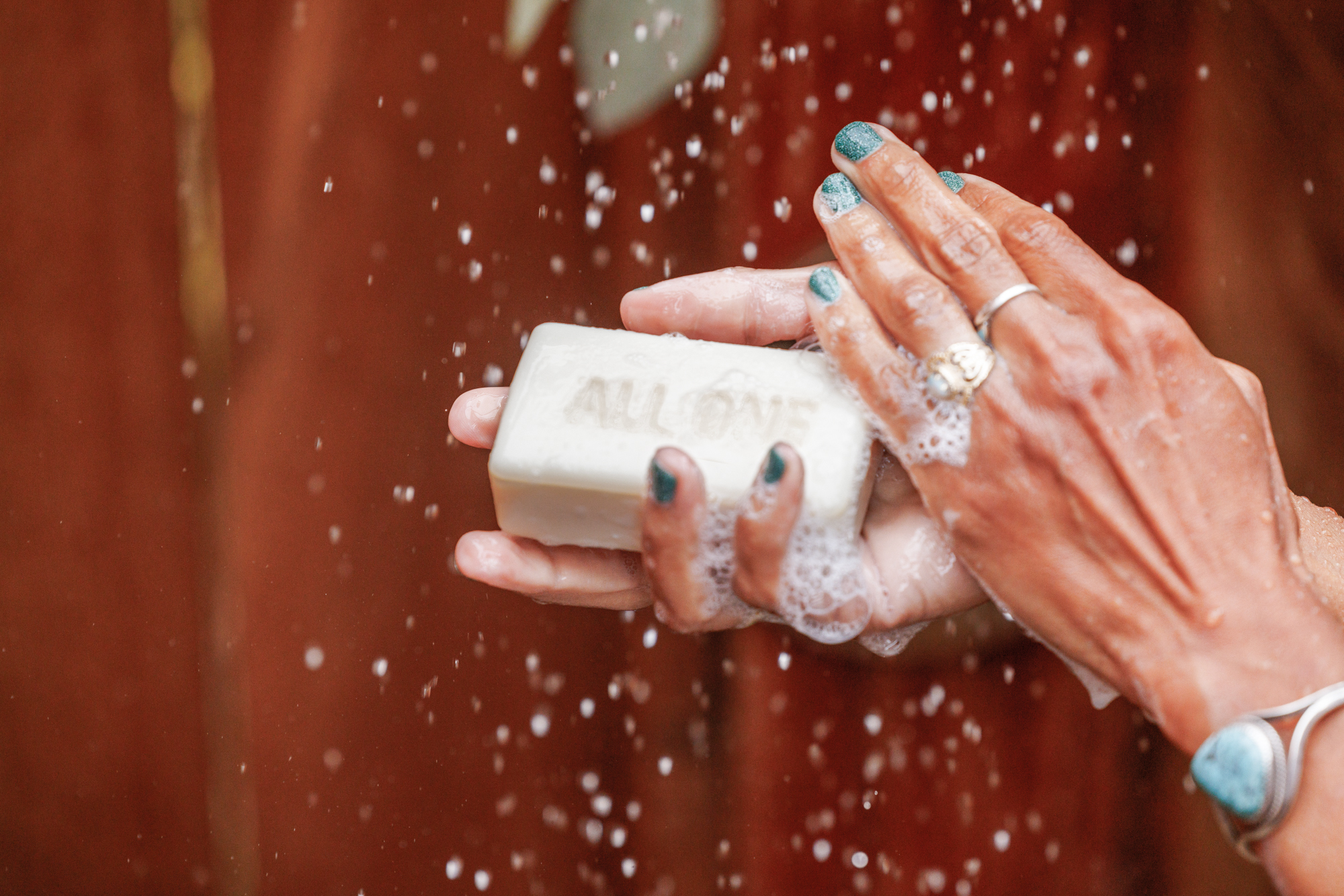
The word Castile in modern parlance indicates a vegetable oil-based soap. However, the word is still not protected by any regulation or certification, so it is up to savvy ingredient readers to check to be sure a so-called Castile soap does not contain any animal fats, petroleum derivatives, detergents, or artificial foaming agents.
All in all, soap has not changed tremendously over the millennia, which is somehow beautiful and humbling. In soap we have a ready connection with all who came before who strived to take care of themselves and the world around them the best way they knew how.

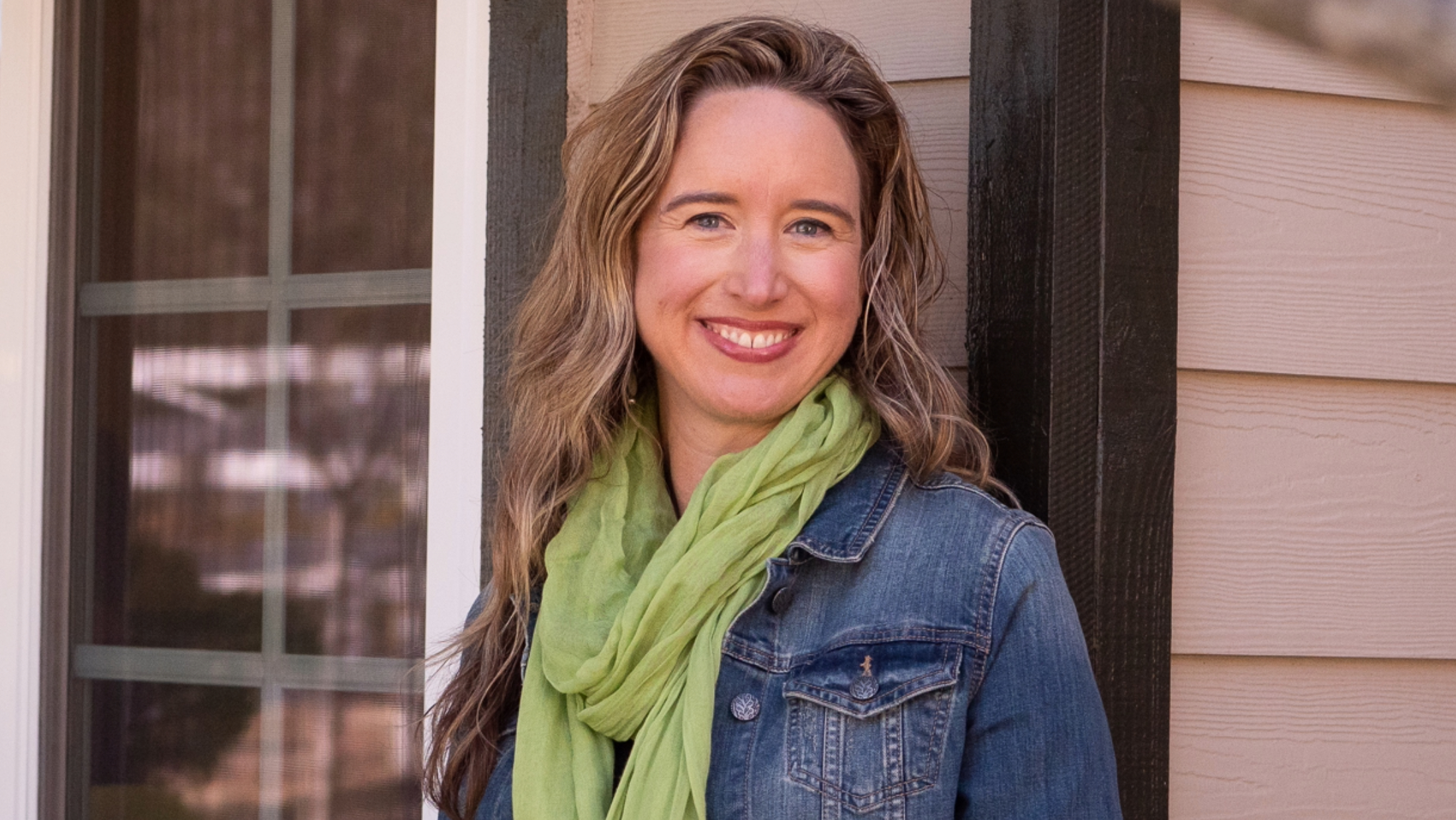
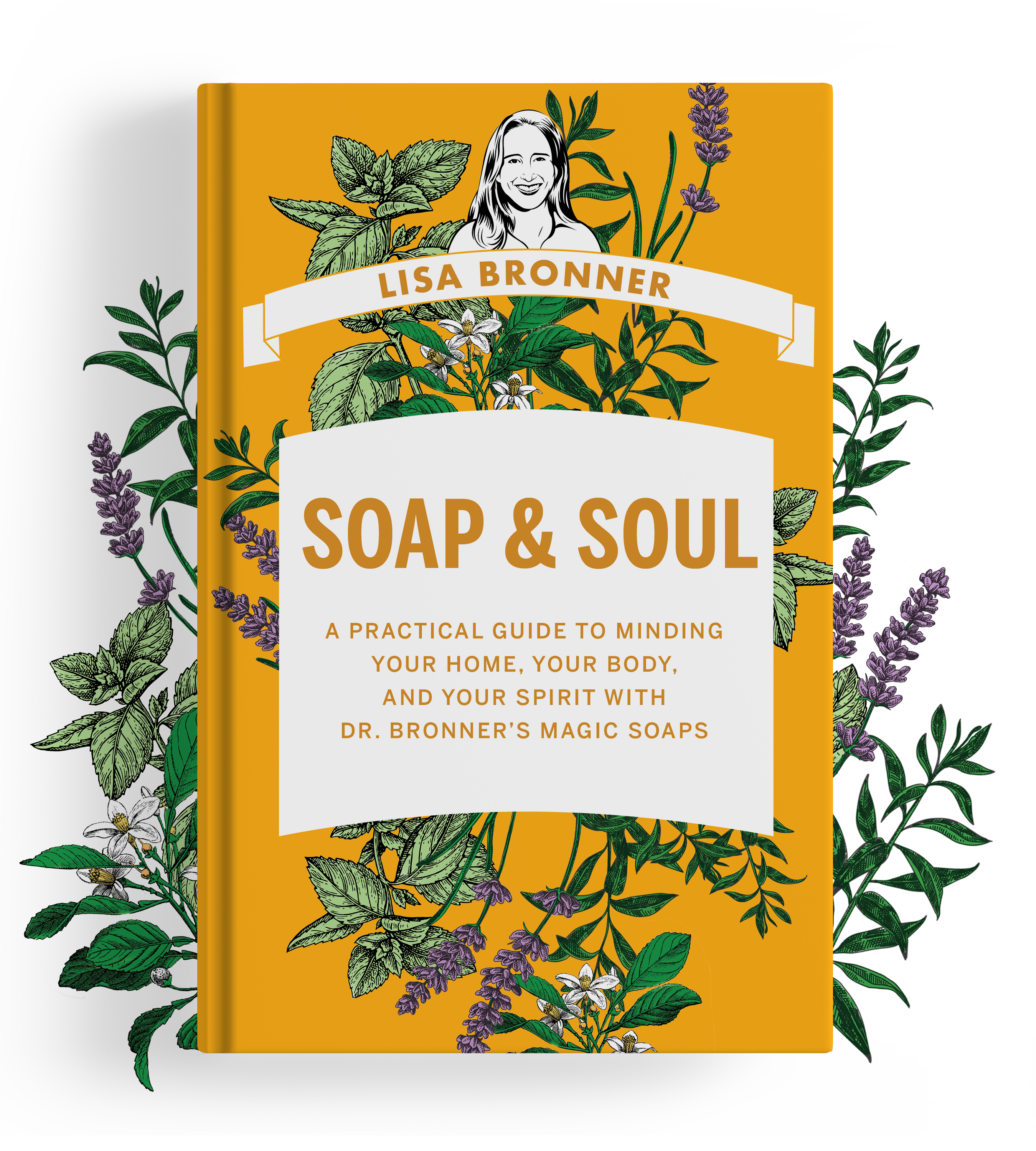
Very interesting! Thank you for doing the research on the very early history.
Love Dr. Bronner’s! A few questions
1. I have been looking for a natural deodorant. Will there be one made in the future?
2. Will there ever be almond scented lotion?
Thank you!
Hi Kev – Both are great suggestions and I will be sure to pass along! At Dr. Bronner’s we don’t move very quickly in bringing out new products. We like to do what we do really well, keep things simple, and spend a long time formulating, testing, and ensuring that the ingredients are of the highest integrity, and all that. In the meantime, the Environmental Working Group (EWG.org) has a database of body care products ranked by ingredients, environmental impact and such, which is a helpful resource for researching new products like deodorants. I hope you find it helpful! https://www.ewg.org/skindeep/
Very interesting article!
Fabulous article thankyou for the time spent researching for it, it must have been a joy!
Your products are 2nd to none! 🙏🏻
Thank you for your kind words, Vanessa!
I enjoy your writing immensely. The history was something that I did not know that I needed, but I needed it!
Thank you for your kind words, Valerie. I’m glad you enjoyed the article!
Wow, I can’t believe that it wasn’t until the 1980s that the CDC began to officially recommend handwashing with soap! I graduated from nursing school in 1979 and remember being told not to wear gloves when caring for patients because they would be offended. And we thought we were so modern!
Why is castile soap more clean rinsing than other soaps?
Hi Emerick – Great question! Many products have conditioners added to them, which leave a very soft feel on the skin, but it is due to a residue. This would usually be touted as a “moisturizing” soap. A true Castile Soap does not have anything like that, leaving no residues behind.
I’m having my mind blown as I had no idea soap making went back that far. I’ve visited Nablus and seen the floor pouring method for curing soap and then cutting and stacking for hardening. Pretty amazing to be in place with over 600 years of continuous soap making.
I learned a lot with this piece. Thanks!